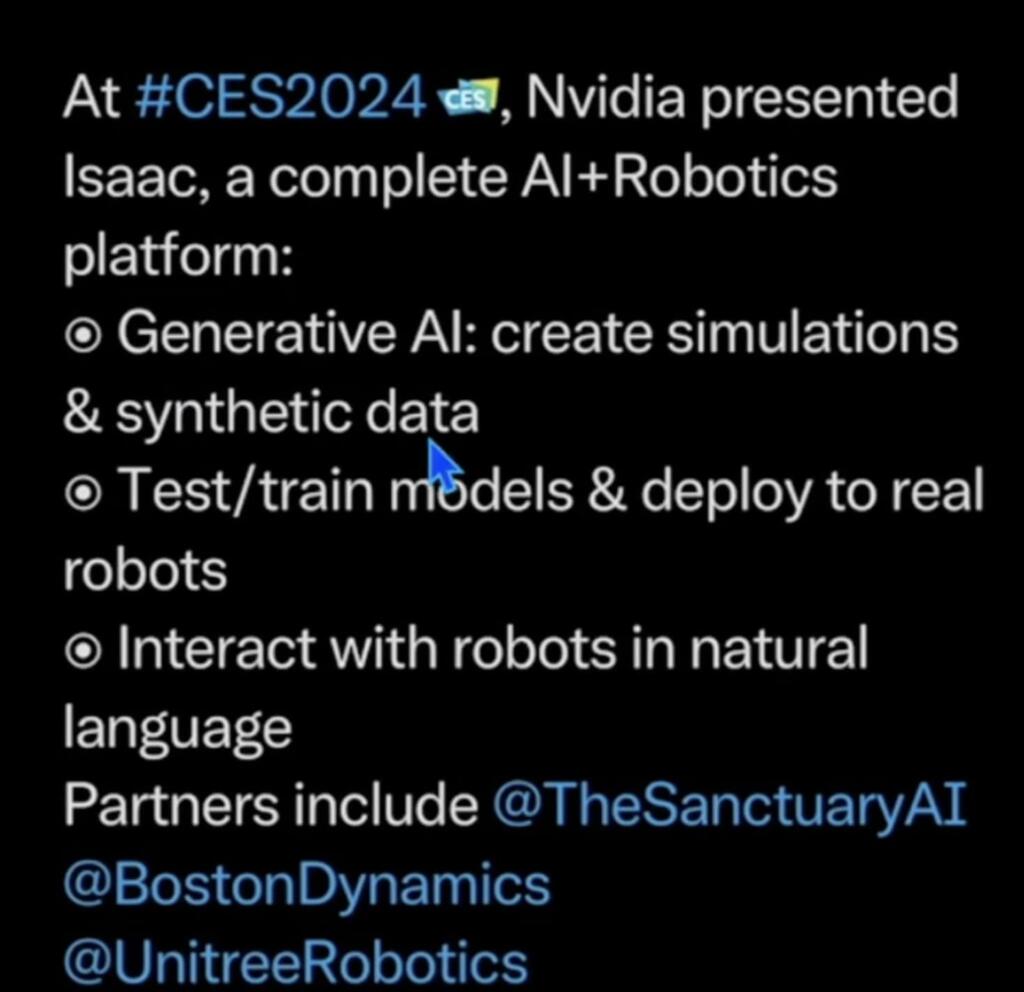NVIDIA Vice President of Robotics and Edge Computing Deepu Talla detailed how NVIDIA and its partners are bringing generative AI and robotics together.
They have a growing roster of partners — including Boston Dynamics, Collaborative Robotics, Covariant, Sanctuary AI, Unitree Robotics and others — embracing GPU-accelerated large language models to bring unprecedented levels of intelligence and adaptability to machines of all kinds.
“Autonomous robots powered by artificial intelligence are being increasingly utilized for improving efficiency, decreasing costs and tackling labor shortages,” Talla said.
A decade ago, NVIDIA founder and CEO Jensen Huang hand-delivered the first NVIDIA DGX AI supercomputer to OpenAI. Now, thanks to OpenAI’s ChatGPT, generative AI has become one of the fastest-growing technologies of our time.
And it’s just getting started.
The impact of generative AI will go beyond text and image generation — and into homes and offices, farms and factories, hospitals and laboratories, Talla predicted.
The key: LLMs, akin to the brain’s language center, will let robots understand and respond to human instructions more naturally.
Such machines will be able to learn continuously from humans, from each other and from the world around them.
“Given these attributes, generative AI is well-suited for robotics,” Talla said.
How Robots Are Using Generative AI
Agility Robotics, NTT, and others are incorporating generative AI into their robots to help them understand text or voice commands. Robot vacuum cleaners from Dreame Technology are being trained in simulated living spaces created by generative AI models. And Electric Sheep is developing a world model for autonomous lawn mowing.
NVIDIA technologies such as the NVIDIA Isaac and Jetson platforms, which facilitate the development and deployment of AI-powered robots, are already relied on by more than 1.2 million developers and 10,000 customers and partners.
At #CES2024, Nvidia presented Isaac, a complete AI+Robotics platform:
⦿ Generative AI: create simulations & synthetic data
⦿ Test/train models & deploy to real robots
⦿ Interact with robots in natural language
Partners include @TheSanctuaryAI @BostonDynamics @UnitreeRobotics pic.twitter.com/qpFNSlHC59— Tesla Bot Journal (@TeslaBotJournal) January 8, 2024
Generating Quality Assets and Scenes
Talla also highlighted the role of LLMs in breaking down technical barriers, turning typical users into technical artists capable of creating complex robotics workcells or entire warehouse simulations.
With generative AI tools like NVIDIA Picasso, users can generate realistic 3D assets from simple text prompts and add them to digital scenes for dynamic and comprehensive robot training environments.
The same capability extends to creating diverse and physically accurate scenarios in Omniverse, enhancing the testing and training of robots to ensure real-world applicability.
This dovetails with the transformative potential of generative AI in reconfiguring the deployment of robots.



Everyone who has been asking for embodied AGI results, get ready https://t.co/wRhk0t9B49
— Geordie Rose (@realgeordierose) January 11, 2024
Everyone who has been asking for embodied AGI results, get ready https://t.co/wRhk0t9B49
— Geordie Rose (@realgeordierose) January 11, 2024

Brian Wang is a Futurist Thought Leader and a popular Science blogger with 1 million readers per month. His blog Nextbigfuture.com is ranked #1 Science News Blog. It covers many disruptive technology and trends including Space, Robotics, Artificial Intelligence, Medicine, Anti-aging Biotechnology, and Nanotechnology.
Known for identifying cutting edge technologies, he is currently a Co-Founder of a startup and fundraiser for high potential early-stage companies. He is the Head of Research for Allocations for deep technology investments and an Angel Investor at Space Angels.
A frequent speaker at corporations, he has been a TEDx speaker, a Singularity University speaker and guest at numerous interviews for radio and podcasts. He is open to public speaking and advising engagements.

